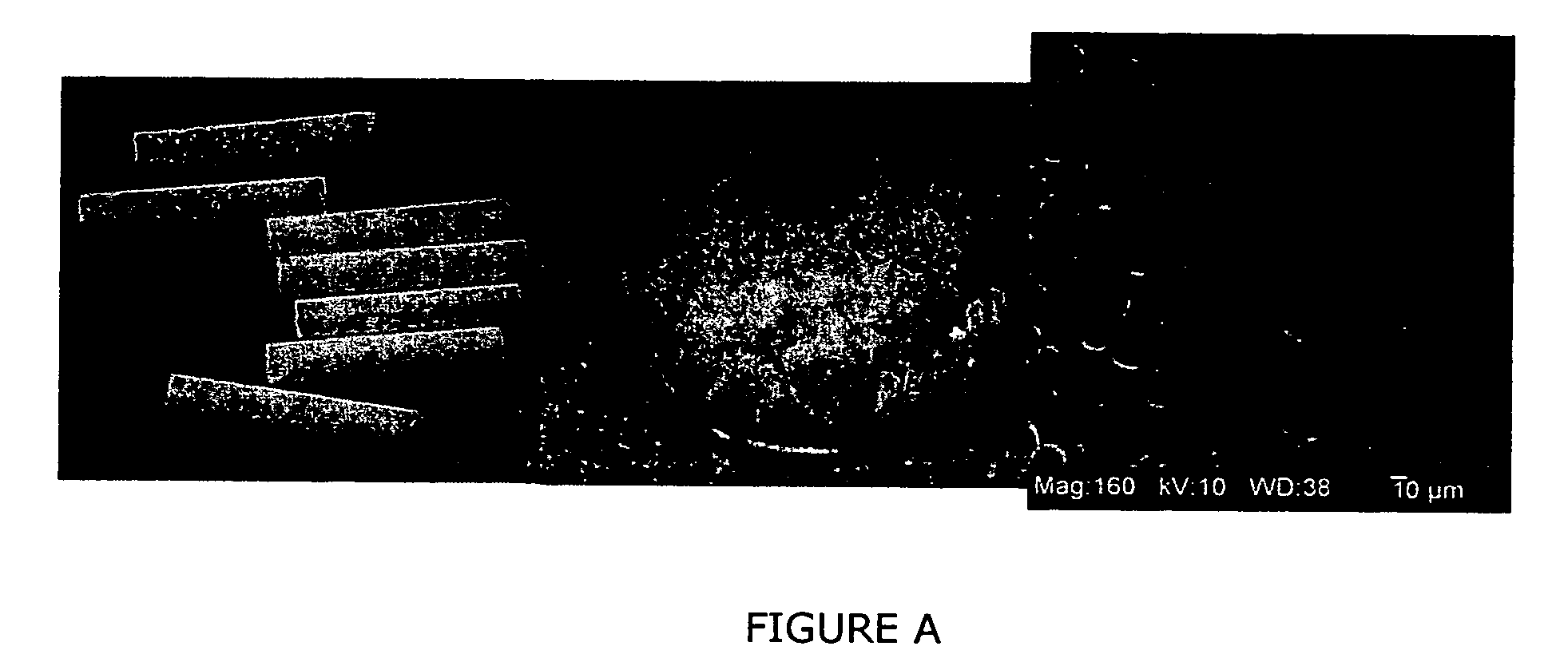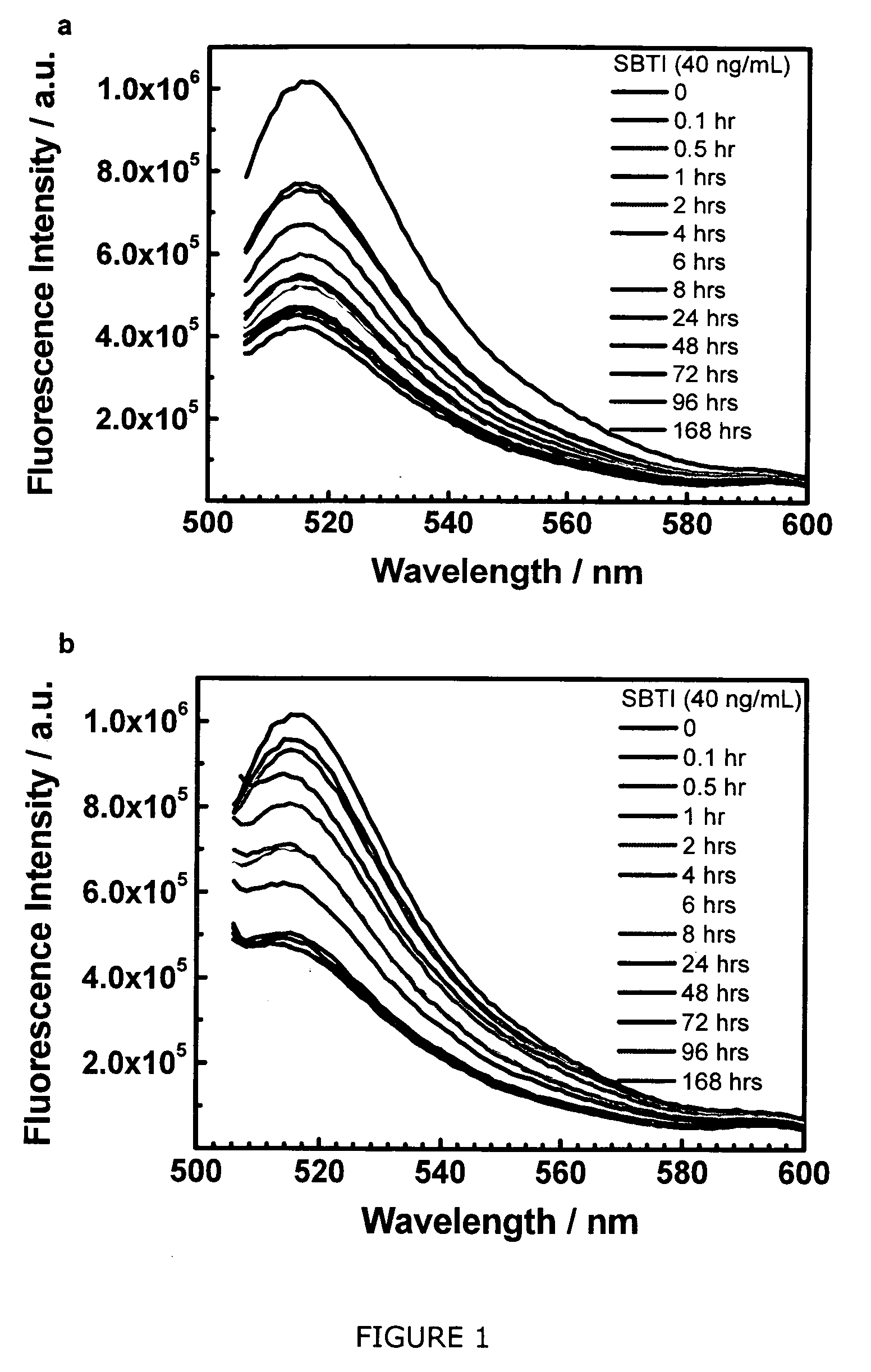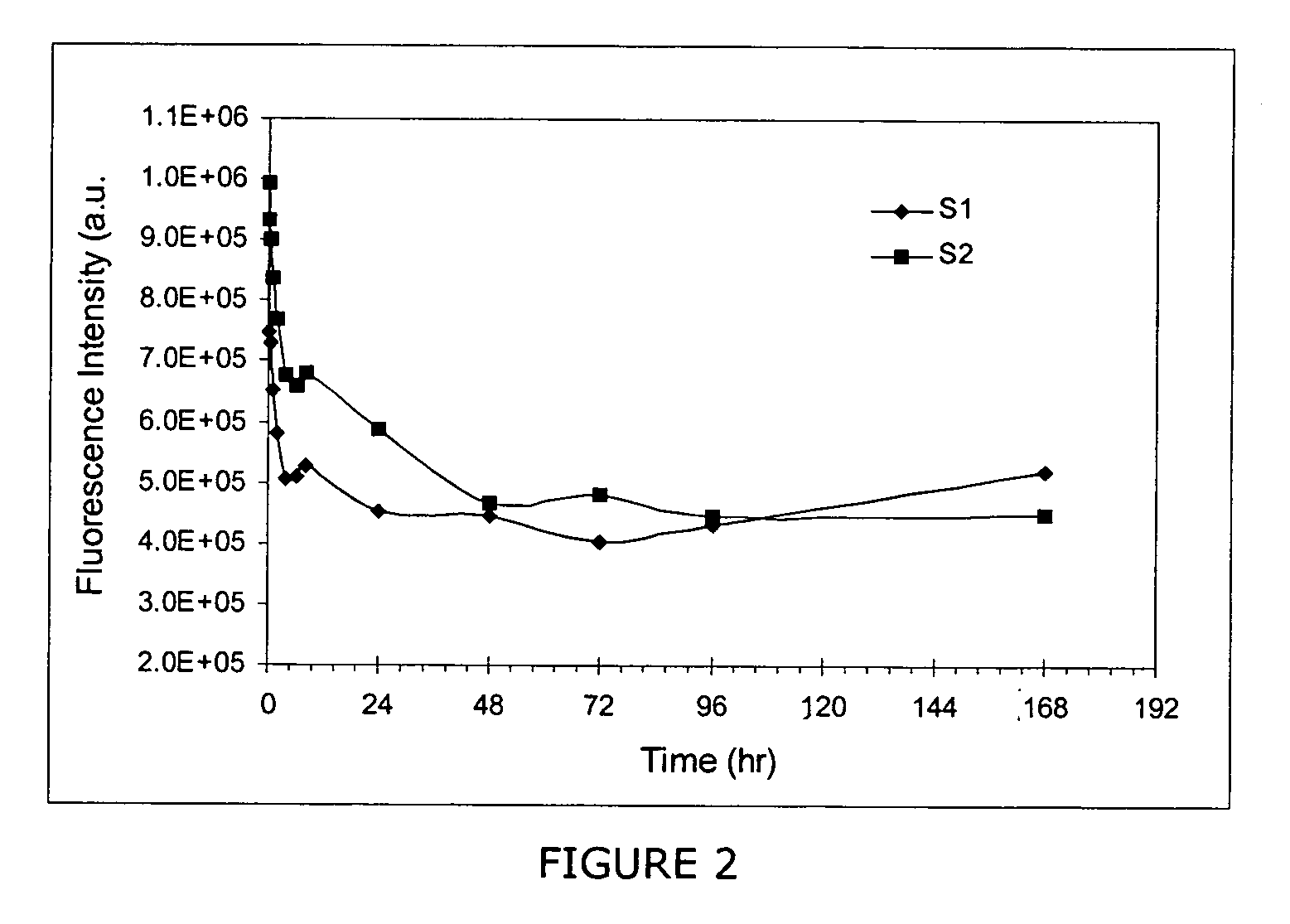Three dimensional micro-environments and methods of making and using same
a microenvironment and three-dimensional technology, applied in the field of three-dimensional microenvironments, can solve the problems of poor candidates for the control of the release of carrier materials, limited transportation of larger protein molecules, and limited storage capacity of rigid inorganic structures, etc., and achieve the effect of optimal cell structur
- Summary
- Abstract
- Description
- Claims
- Application Information
AI Technical Summary
Benefits of technology
Problems solved by technology
Method used
Image
Examples
example 2
Nutrient Release Controlled by Scaffold Permeability
[0051] I. Method of Testing Diffusion-In and Release
[0052] Nutrient carrier materials are capable of holding and releasing nutrients. For different drug delivery and cell culture purposes, however, the nutrient releasing behaviors such as releasing time and rate, need to be variable and better controlled. In order to increase the variability and control of such behaviors, the cross-linking degree of the scaffold was varied and investigated. The 3D inverted colloidal crystal hydrogel scaffolds, denoted as S1 (round shape: 0.55 cm in diameter and 0.25 cm in height) and S2 (rectangle shape: 1 cm×0.5 cm×0.5 cm), used for the nutrient delivery investigation were made by infiltrating polymers within the voids of hexagonal colloidal crystal PMMA templates and removing the templates subsequently. A small protein, Alexa Fluor 488-labeled Trypsin Inhibitor from Soybean (SBTI, from Molecular Probes, 21KD, PI 4.5) was selected to simulate a ...
example 3
Nutrient Release Controlled by Coating Hydrogel Scaffolds
[0068] As indicated herein, through natural diffusion, hydrogel scaffolds can be saturated with SBTI within 4 hrs. The release of SBTI out of the scaffolds, however, can last up to 27 days. For special drug delivery or cell culture purposes, the time of release of nutrient out of the scaffold needs to be variable. For this purpose, a method using LBL assembly was developed to coat polyelectrolytes onto hydrogel scaffolds that have been previously saturated with nutrient in order to control the releasing properties of the scaffold. Coating polyelectrolytes onto the hydrogel scaffolds after the scaffold is saturated prevents a fast release of the nutrient from the scaffolds. In fact, results demonstrate that LBL coating layers decrease the releasing rate of SBTI from the saturated hydrogel scaffolds.
[0069] The nutrient release behaviors of hydrogel scaffolds without any coating layers and with a five bilayer coating of polysty...
example 4
Release Kinetics of Interleukin-3
[0073] The short term and long term release kinetics of Interleukin-3 (IL-3) from PAAM scaffold were investigated through the use of Enzyme-Linked Immunosorbent Assay (ELISA) to measure the amount of IL-3 released.
[0074] PAAM scaffold was immersed in 1 ml RPMI-1640 Medium (RPMI-1640 was developed by Moore et. al. at Roswell Park Memorial Institute, hence the acronym RPMI) with 10% fetal bovine serum (FBS) and 50 ng / mL IL3 for 24 hours. Scaffold was then placed in the well of a 48 well plate containing 500 uL of RPMI media with 10% FBS but no IL-3 and incubated at 37° C., 10% CO2. For the short term release study, the media in the well was collected and replaced with fresh media at different time-points—i.e., 30 seconds, 1 minute, 5 minutes, 1 hour, 5 hours, 7 hours, 22 hours. For the long term release study, the media in the well was collected and replaced with fresh media every day for 6 days. Collected media were transferred to a different well o...
PUM
| Property | Measurement | Unit |
|---|---|---|
| concentration | aaaaa | aaaaa |
| diameter×3cm | aaaaa | aaaaa |
| diameter×1 | aaaaa | aaaaa |
Abstract
Description
Claims
Application Information
 Login to View More
Login to View More - R&D
- Intellectual Property
- Life Sciences
- Materials
- Tech Scout
- Unparalleled Data Quality
- Higher Quality Content
- 60% Fewer Hallucinations
Browse by: Latest US Patents, China's latest patents, Technical Efficacy Thesaurus, Application Domain, Technology Topic, Popular Technical Reports.
© 2025 PatSnap. All rights reserved.Legal|Privacy policy|Modern Slavery Act Transparency Statement|Sitemap|About US| Contact US: help@patsnap.com



